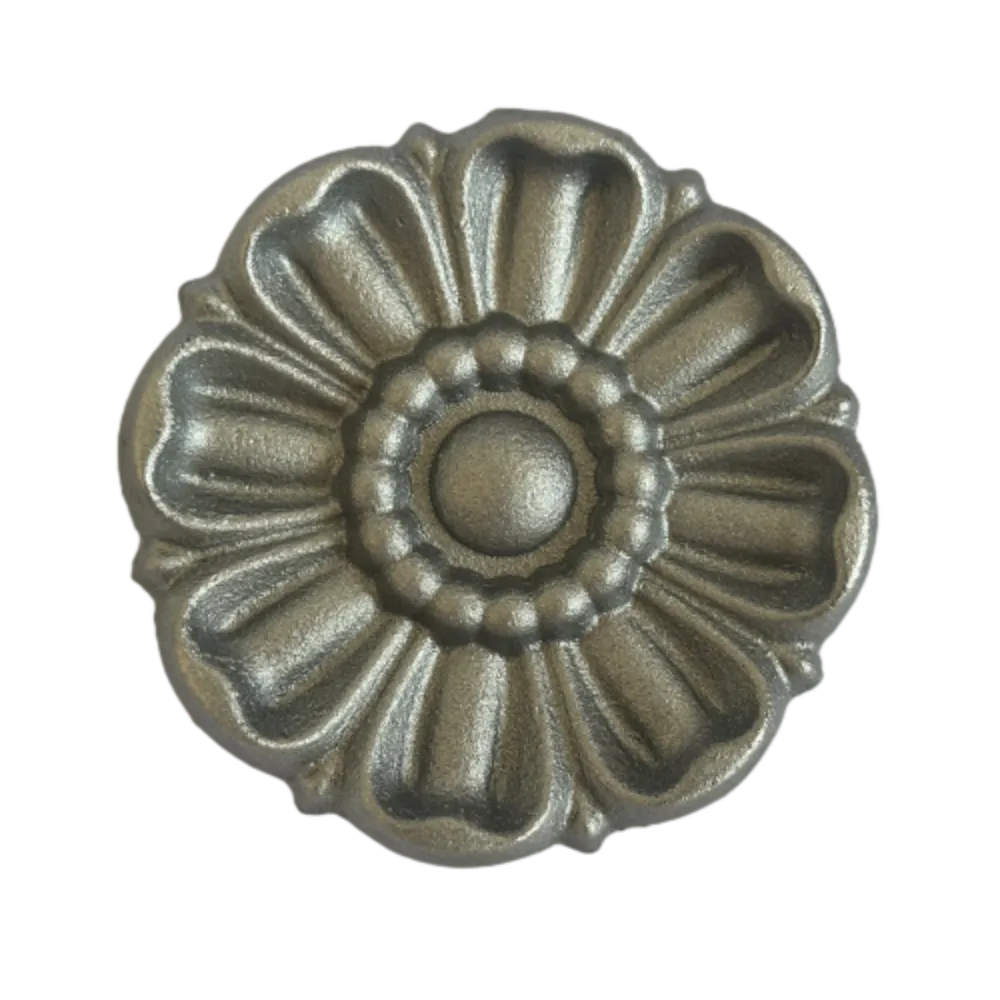Elegant Cast Iron Finials for Home Decor and Garden Enhancements
The Art of Cast Iron Finials A Touch of Elegance and History
Cast iron finials, often overlooked in contemporary design, are remarkable architectural features that have graced homes, gardens, and public buildings for centuries. They serve not only as decorative elements but also embody a rich history that reflects various cultural styles and artistic movements. With their intricate designs and robust construction, cast iron finials are a testament to craftsmanship that continues to captivate both homeowners and architects alike.
Historical Significance
The origin of cast iron finials can be traced back to the 18th and 19th centuries when the industrial revolution made iron casting feasible on a large scale. Initially, these ornamental pieces were used to adorn the roofs of houses, gates, and fences, adding a touch of sophistication and elegance. The popularity of cast iron finials surged, particularly in Victorian architecture, where they became symbolic of opulence and artistry. Their presence on buildings was often indicative of a homeowner’s social status, showcasing both wealth and aesthetic taste.
Finials come in an array of styles, from Gothic spires to classical urns, each representing the architectural design of its era. In the Victorian period, for example, elaborate and whimsical designs were favored, often incorporating intricate motifs like flowers, dragons, and angels. These unique designs not only enhanced the beauty of a structure but also told stories of the period’s artistic inclinations.
Aesthetic Appeal
Today, cast iron finials are celebrated for their aesthetic appeal
. They can transform an ordinary house into an extraordinary one, adding distinct character to rooftops, fences, and garden structures. Whether it’s a meticulously crafted finial atop a wrought iron gate or a charming piece atop a gazebo, these decorative elements bring a sense of history and elegance.cast iron finials

The beauty of cast iron lies not just in its visual appeal but also in its durability. Unlike other materials, cast iron withstands the test of time, weathering elements without losing its structural integrity. This resilience makes it an ideal choice for outdoor applications, where it can continue to inspire charm and sophistication for generations.
Modern Applications
In recent years, there has been a resurgence of interest in cast iron finials within modern design. Architects and designers are increasingly integrating these timeless pieces into contemporary projects, proving that traditional elements can harmonize beautifully with modern aesthetics. From chic urban lofts to rustic countryside homes, cast iron finials can complement diverse design styles, bridging the gap between the past and the present.
Moreover, the sustainability aspect of cast iron cannot be overlooked. In an era where eco-friendly materials are highly valued, cast iron’s longevity and potential for recycling make it an attractive option. By choosing cast iron finials, homeowners not only embrace artistic beauty but also contribute to sustainable practices in construction and design.
Conclusion
In summary, cast iron finials are more than mere decorative elements; they are a reflection of history, artistry, and craftsmanship. Their enduring appeal continues to inspire modern design while offering a glimpse into the past. As homeowners and architects explore ways to incorporate unique elements into their spaces, cast iron finials stand out as a sophisticated choice that enhances both aesthetic and historical value. Whether you’re restoring an old home or designing a new space, consider the timeless allure of cast iron finials—a small addition that can make a significant impact. In a world that often favors the fleeting, these sturdy yet elegant elements remind us of the beauty in lasting craftsmanship.
-
Wrought Iron Components: Timeless Elegance and Structural StrengthNewsJul.28,2025
-
Window Hardware Essentials: Rollers, Handles, and Locking SolutionsNewsJul.28,2025
-
Small Agricultural Processing Machines: Corn Threshers, Cassava Chippers, Grain Peelers & Chaff CuttersNewsJul.28,2025
-
Sliding Rollers: Smooth, Silent, and Built to LastNewsJul.28,2025
-
Cast Iron Stoves: Timeless Heating with Modern EfficiencyNewsJul.28,2025
-
Cast Iron Pipe and Fitting: Durable, Fire-Resistant Solutions for Plumbing and DrainageNewsJul.28,2025
-
 Wrought Iron Components: Timeless Elegance and Structural StrengthJul-28-2025Wrought Iron Components: Timeless Elegance and Structural Strength
Wrought Iron Components: Timeless Elegance and Structural StrengthJul-28-2025Wrought Iron Components: Timeless Elegance and Structural Strength -
 Window Hardware Essentials: Rollers, Handles, and Locking SolutionsJul-28-2025Window Hardware Essentials: Rollers, Handles, and Locking Solutions
Window Hardware Essentials: Rollers, Handles, and Locking SolutionsJul-28-2025Window Hardware Essentials: Rollers, Handles, and Locking Solutions -
 Small Agricultural Processing Machines: Corn Threshers, Cassava Chippers, Grain Peelers & Chaff CuttersJul-28-2025Small Agricultural Processing Machines: Corn Threshers, Cassava Chippers, Grain Peelers & Chaff Cutters
Small Agricultural Processing Machines: Corn Threshers, Cassava Chippers, Grain Peelers & Chaff CuttersJul-28-2025Small Agricultural Processing Machines: Corn Threshers, Cassava Chippers, Grain Peelers & Chaff Cutters












